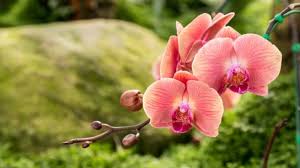# Long-Living Phalaenopsis Orchid Varieties and Their Care

Phalaenopsis orchids, often known as moth orchids, are among the most popular houseplants due to their striking beauty and relatively easy care. Some varieties can thrive for years with the right care, becoming treasured plants in any collection. This comprehensive guide will delve into various long-living Phalaenopsis orchid varieties, their unique characteristics, and effective care strategies to ensure they flourish.
## Table of Contents
1. **Introduction to Phalaenopsis Orchids**
– 1.1 Overview of Phalaenopsis Varieties
– 1.2 Significance of Long-Living Orchids
2. **Popular Long-Living Phalaenopsis Varieties**
– 2.1 Phalaenopsis Amabilis
– 2.2 Phalaenopsis Sogo Yukidian
– 2.3 Phalaenopsis Luddemanniana
– 2.4 Phalaenopsis Equestris
– 2.5 Phalaenopsis Bellina
– 2.6 Phalaenopsis Javanica
– 2.7 Phalaenopsis Giverny
– 2.8 Phalaenopsis Aphrodite
– 2.9 Phalaenopsis Kiko
– 2.10 Phalaenopsis Dragon Tree Eagle
3. **Understanding the Life Cycle of Phalaenopsis Orchids**
– 3.1 Phases of Growth
– 3.2 Importance of Each Growth Phase
4. **Optimal Environmental Conditions**
– 4.1 Light Requirements
– 4.2 Temperature and Humidity
– 4.3 Air Circulation
5. **Watering and Fertilization Guidelines**
– 5.1 Watering Techniques
– 5.2 Choosing the Right Fertilizer
– 5.3 Fertilization Schedule
6. **Potting and Repotting Phalaenopsis Orchids**
– 6.1 Choosing the Right Potting Medium
– 6.2 Signs It’s Time to Repot
– 6.3 Repotting Process
7. **Pruning and Maintenance Practices**
– 7.1 When and How to Prune
– 7.2 Maintaining Healthy Leaves and Roots
8. **Pest and Disease Management**
– 8.1 Common Pests
– 8.2 Recognizing and Treating Diseases
9. **Encouraging Long Life and Blooms**
– 9.1 Promoting Re-blooming
– 9.2 Ensuring Longevity in Orchids
10. **Conclusion: The Joy of Growing Long-Living Phalaenopsis Orchids**
—
## 1. Introduction to Phalaenopsis Orchids
### 1.1 Overview of Phalaenopsis Varieties
Phalaenopsis orchids are renowned for their broad range of colors and patterns, making them a favorite among orchid enthusiasts. Each variety has distinct characteristics that contribute to its longevity and beauty. Understanding these varieties will help you choose the best one for your home.
### 1.2 Significance of Long-Living Orchids
Long-living orchids provide years of enjoyment, enhancing indoor spaces with their elegant blooms and unique shapes. They can also serve as a reminder of care and dedication, as they thrive on the attention and love given to them.
## 2. Popular Long-Living Phalaenopsis Varieties
### 2.1 Phalaenopsis Amabilis
– **Description:** Known as the “Moon Orchid,” this variety is celebrated for its large, fragrant white flowers with yellow centers.
– **Lifespan:** Can live over 10 years with proper care.
### 2.2 Phalaenopsis Sogo Yukidian
– **Description:** This hybrid produces striking white flowers with pink and purple markings. It is hardy and resilient.
– **Lifespan:** Known for a lifespan of over 8 years, it frequently re-blooms.
### 2.3 Phalaenopsis Luddemanniana
– **Description:** This variety features smaller, fragrant flowers that are often bright yellow with red spots.
– **Lifespan:** Can thrive for more than 12 years with appropriate care.
### 2.4 Phalaenopsis Equestris
– **Description:** This type is known for its charming pastel colors, typically light purple or pink.
– **Lifespan:** With good conditions, it can live up to 8 years.
### 2.5 Phalaenopsis Bellina
– **Description:** Recognized for its delightful scent, this variety produces vivid yellow flowers with a hint of pink.
– **Lifespan:** It can live for over 10 years and thrives in various conditions.
### 2.6 Phalaenopsis Javanica
– **Description:** This orchid is notable for its unique leaf patterns and small white flowers with purple markings.
– **Lifespan:** Capable of living for more than a decade.
### 2.7 Phalaenopsis Giverny
– **Description:** Known for its stunning white and lavender flowers, this variety adds elegance to any collection.
– **Lifespan:** Can last up to 10 years with the right care.
### 2.8 Phalaenopsis Aphrodite
– **Description:** This hybrid features delicate white flowers with subtle pink hues and is known for its resilience.
– **Lifespan:** Can thrive for more than 12 years.
### 2.9 Phalaenopsis Kiko
– **Description:** Characterized by its bright yellow flowers with red speckles, this variety is a vibrant addition.
– **Lifespan:** Known to live for over a decade.
### 2.10 Phalaenopsis Dragon Tree Eagle
– **Description:** This hybrid features striking purple and white flowers and is popular among collectors.
– **Lifespan:** Can thrive for 8-10 years or more.
## 3. Understanding the Life Cycle of Phalaenopsis Orchids
### 3.1 Phases of Growth
Phalaenopsis orchids go through several growth phases, including:
– **Active Growth:** Characterized by leaf and root development.
– **Flowering Phase:** When the orchid produces blooms, usually lasting several months.
– **Resting Phase:** A period of dormancy following flowering, where the plant conserves energy.
### 3.2 Importance of Each Growth Phase
Understanding each phase is crucial for providing appropriate care. For instance, during the flowering phase, the plant requires more nutrients and water, while during the resting phase, it needs less.
## 4. Optimal Environmental Conditions
### 4.1 Light Requirements
Phalaenopsis orchids thrive in bright, indirect light. Direct sunlight can scorch their leaves, while too little light may hinder blooming. A location near a window with filtered light is ideal.
### 4.2 Temperature and Humidity
– **Temperature:** Ideal temperatures range between 65°F to 80°F (18°C to 27°C).
– **Humidity:** Phalaenopsis orchids prefer humidity levels of 50% to 70%. Using a humidity tray or misting can help maintain these levels.
### 4.3 Air Circulation
Good air circulation is vital to prevent mold and pests. Placing orchids in a well-ventilated area promotes healthy growth and helps them thrive.
## 5. Watering and Fertilization Guidelines
### 5.1 Watering Techniques
Proper watering is crucial for orchid health. Water Phalaenopsis orchids when the potting medium feels dry to the touch. Use room-temperature water and ensure that excess water drains away to prevent root rot.
### 5.2 Choosing the Right Fertilizer
Use a balanced orchid fertilizer (such as a 30-10-10 formula) specifically formulated for orchids. This type of fertilizer provides the necessary nutrients for growth and blooming.
### 5.3 Fertilization Schedule
Fertilize your orchids every two to four weeks during the active growth phase and reduce frequency during the resting phase. Always follow the manufacturer’s instructions for dilution.
## 6. Potting and Repotting Phalaenopsis Orchids
### 6.1 Choosing the Right Potting Medium
Phalaenopsis orchids require a well-draining potting medium. A mixture of bark, sphagnum moss, and perlite is ideal. This allows for good aeration while retaining moisture.
### 6.2 Signs It’s Time to Repot
– **Root Bound:** Roots are tightly packed and growing out of the pot.
– **Decayed Medium:** The potting medium has broken down and no longer drains well.
– **Poor Growth:** The plant shows signs of stunted growth.
### 6.3 Repotting Process
1. **Remove the Orchid:** Gently take the orchid out of its pot.
2. **Trim Dead Roots:** Use sterilized scissors to cut away any dead or mushy roots.
3. **Add Fresh Medium:** Place the orchid in a new pot with fresh potting medium, ensuring the roots are spread out evenly.
## 7. Pruning and Maintenance Practices
### 7.1 When and How to Prune
Pruning is essential for maintaining the health of your orchid. After the flowering phase, cut back the flower spike to promote new growth. Trim any yellow or damaged leaves to improve air circulation and overall appearance.
### 7.2 Maintaining Healthy Leaves and Roots
Regularly inspect leaves for signs of pests or diseases. Keep leaves clean by wiping them with a damp cloth. Healthy roots should be firm and white; if roots appear dark or mushy, trim them back.
## 8. Pest and Disease Management
### 8.1 Common
Pests
Phalaenopsis orchids can be susceptible to various pests, including:
– **Mealybugs:** Cotton-like pests that feed on plant sap.
– **Spider Mites:** Tiny pests that cause leaf discoloration.
– **Scale:** Hard-shelled insects that can be challenging to detect.
### 8.2 Recognizing and Treating Diseases
Common diseases include root rot and fungal infections. Signs of root rot include mushy roots and yellowing leaves. Treat diseases by improving drainage and using appropriate fungicides.
## 9. Encouraging Long Life and Blooms
### 9.1 Promoting Re-blooming
To encourage your orchid to re-bloom, ensure it receives proper light and nutrition. After blooming, provide a period of reduced watering to simulate seasonal changes, prompting the plant to flower again.
### 9.2 Ensuring Longevity in Orchids
Consistency in care—light, water, humidity, and nutrition—plays a significant role in the longevity of Phalaenopsis orchids. Regular monitoring and adjustments to their environment can ensure they thrive for years.
## 10. Conclusion: The Joy of Growing Long-Living Phalaenopsis Orchids
Growing long-living Phalaenopsis orchids can be a rewarding experience. With the right care, these beautiful plants can thrive for years, offering stunning blooms and enriching any indoor space. By understanding their unique needs and characteristics, orchid enthusiasts can cultivate a thriving collection of these remarkable plants, enjoying the joy they bring for a lifetime.

